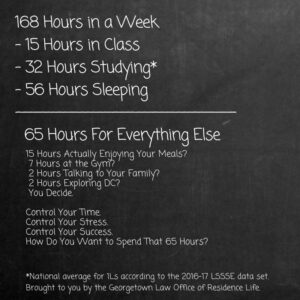 Rising With the Tide: Using National and Off-Cycle LSSSE Data to Improve Practice and Scholarship
Rising With the Tide: Using National and Off-Cycle LSSSE Data to Improve Practice and Scholarship
Trent Kennedy, MA, JD
National LSSSE data are a valuable and oft-overlooked resource to improve scholarship and data-informed practice. Their free online Public Reporting Tool gives everyone access to aggregated data from the last eight years of LSSSE administrations, allowing for quick checks and relatively detailed dives. Researchers and administrators who are interested in testing assumptions, building theories across data sources, and leveraging national norms should keep it in mind as their projects take shape.
The demographics of LSSSE participants reflect those of US law students overall (at least as of 2017). A total of 181 US law schools have participated in LSSSE since 2004, and each year’s cohort contains law schools from up and down the US News and World Report ratings (and one of my favorite data visualizations in legal education reminds us that it is a rating), capturing institutional diversity as well as student demographics.
Student Affairs professionals, faculty members, and administrators can use the Public Reporting Tool for a number of different useful functions, which are especially powerful when combined with school-specific data.
Testing Assumptions
National LSSSE data allow users to test myths, assumptions, and meso-ideas about law student characteristics and experiences. For example, after noting that 27.1-29.2% of LSSSE participants between 2014 and 2019 reported being first-generation college graduates, Georgetown Law began to investigate the experiences of our own first-generation students, law student affairs professionals from across the country engaged more deeply with the NASPA Center for First-Generation Student Success, and the AALS Section on Student Services is exploring a collaborative program about the needs of first-generation students writ large. As the old assumptions about our student populations become less and less useful, local and national data will help identify needs and marshal resources for the future of legal education.
National LSSSE data also show a consistent decline in overall satisfaction and preference for the same law school as JD students progress from 1L to 3L year. Students in their 3L year will certainly have more experience with and information about their law school, but local data are needed to know if they will really be the best boosters to alumni or prospective students.
Norming
The converse of assumption testing is establishing norms that can be leveraged to influence student behavior. Social norming is a common technique in public health communication, often used to combat perceived isolation as a barrier to healthier behavior. In 2017, my office was struck by the national data around the LSSSE core survey question 6c “In your experience at your law school, how satisfied are you with: Personal counseling?”. Of 20,574 students surveyed that year, 9,132 indicated that they had not used personal counseling while in law school. The actual satisfaction of the remaining 11,442 students ran the gamut, but careful observers will note that 55.6% of JD students participating in LSSSE indicated some uptake of personal counseling services (as distinguished from academic advising, career counseling, and financial aid advising). With so many of our students convinced that they are the only one struggling, seeing flyers around campus with a majority message to the contrary is a powerful sign that vulnerability and help-seeking are nothing to be ashamed of.
In the same vein, national LSSSE data on law student time use helped us build a norming campaign intended to reduce students’ overall stress and sense of time famine (the belief that you have too much to do and too little time to do it all). A quick run through the 2017 LSSSE data showed us that 1Ls spend an average of 31.93 hours per week reading and preparing for class. With 15 hours of weekly classroom instruction for Georgetown Law 1Ls at the time of the project and even factoring in a full night’s sleep each night, that leaves students with plenty of hours per week of waking time not spent in class or studying. That should be around 65 hours to enjoy their meals, visit the gym, talk with their families, or explore the community around them. From our conversations with students and other LSSSE data, we know they don’t feel like they have that much time and spend their hours according to that feeling. We wanted to break them out of the cycle of stress and time famine. We presented the LSSSE data on time spent studying and the ensuing arithmetic on other available time during 1L Orientation in the hopes of relieving perceived time pressure, encouraging self-sustaining behavior, and restoring a sense of control to our 1Ls’ lives. A minority of the student feedback still showed the perennial hobgoblin of anxious peer comparison, but the response from the majority of students (and a few visiting alumni) was positive. They wanted the intended outcome and trusted a norm articulated with national data.

Scholarly Corroboration, Synthesis, and Theory-Building Across Data Sets
National LSSSE data can also be used to corroborate or support local data, allowing for the development of theories across multiple data sets. Law student stress has been a perennial topic of interest, rising in perceived importance as post-recession career pressure continues to haunt current students. Segerstrom’s idiosyncratic instrument revealed time pressure, difficulty of material, and lack of feedback to be chief concerns of law students in the late 1990s but “academic environment” was not. National 2015 LSSSE data from a special module on law student stress reported both the overall level of stress and the major sources of that stress, finding that academic performance and academic workload were the most common concerns while classroom environment/teaching methods was the least common. Flynn, Li, and Sánchez’s 2019 study of law student stress found that workload pressure was the strongest predictor of law student distress, but that course design and grading failed to show statistically significant relationships with the expected distress outcomes. Interested scholars might struggle to meaningfully synthesize Segerstrom and Flynn et al. without the intervening LSSSE data that facilitate a clearer focus on student perceptions rather than the institutional structures that produce them.
Even without timely local data, national and off-cycle LSSSE data enhance other avenues for scholarship and practice. By making the most of that data, legal educators can check their assumptions about student demographics and behavior, make new norms visible to change student attitudes, and connect other data sets into a more coherent (and actionable) landscape. Scholars and practitioners would do well to consider national LSSSE data when looking for insights on a proposal, program, or institutional problem.
